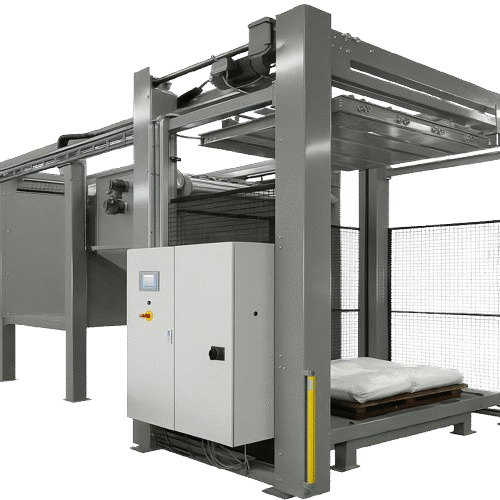What are types of pneumatic conveying system typically used?
There are three main types of pneumatic conveying systems, each suited for specific material characteristics and applications:
🌬️ 1. Dilute Phase (Lean Phase) Conveying
➤ How it Works:
Material is suspended in a high-velocity airstream (15–30 m/s).
Operates at low pressure (< 1 bar for pressure system or –300 mbar for vacuum system).
➤ Types:
Pressure System (positive pressure): Used to convey from one point to multiple destinations.
Vacuum System: Ideal for suction from multiple sources to a single receiver.
➤ Best For:
Non-abrasive, non-fragile, light-density materials
Powder, granules (e.g., sugar, flour, plastic pellets)
🌕 2. Dense Phase Conveying
➤ How it Works:
Material moves as slugs or plugs at low velocity (3–8 m/s).
Requires higher pressure (1–6 bar).
Uses air boosters or fluidizing cones to push material in pulses.
➤ Types:
Pressure Dense Phase: Common for long distances or heavy-duty materials.
Vacuum Dense Phase (less common): Used when containment is critical.
➤ Best For:
Abrasive, fragile, hygroscopic, or cohesive materials
Cement, silica, pharmaceutical powders, metal powders
🔄 3. Semi-Dense Phase Conveying
➤ How it Works:
A hybrid between dilute and dense phase.
Moderate velocities and medium pressures (0.5–1.5 bar).
Materials flow in a partially fluidized mode.
➤ Best For:
Slightly fragile materials or applications needing better control
Food products, detergents, blended powders
🧩 System Selection Depends On:
| Criteria | Suitable System |
|---|---|
| Long distance | Dense Phase |
| Gentle handling | Dense / Semi-Dense |
| High capacity, fast | Dilute Phase |
| Hygroscopic materials | Dense Phase (Vacuum) |
| Multi-point discharge | Dilute Phase (Pressure) |
| Toxic or hazardous | Vacuum Conveying |
Here is a comparison chart for the three main types of pneumatic conveying systems:
📊 Pneumatic Conveying System Comparison Chart
| Feature | Dilute Phase | Dense Phase | Semi-Dense Phase |
|---|---|---|---|
| Air Pressure | Low (< 1 bar) | High (1–6 bar) | Moderate (0.5–1.5 bar) |
| Velocity | High (15–30 m/s) | Low (3–8 m/s) | Moderate (8–15 m/s) |
| Material Flow | Fully suspended in air | Moves in slugs or plugs | Partially suspended (fluidized flow) |
| Wear & Tear | Higher (due to high velocity) | Lower (gentle movement) | Medium |
| Energy Consumption | Higher (more airflow) | Lower per kg but high-pressure equipment | Moderate |
| Best For | Free-flowing, light powders | Fragile, abrasive, hygroscopic powders | Blended or moderately fragile materials |
| Applications | Plastic pellets, sugar, flour | Cement, metal powders, pharma APIs | Detergents, spices, nutraceuticals |
| Conveying Distance | Short to Medium (up to ~100 m) | Medium to Long (up to 500+ m) | Medium (50–150 m) |
| Conveying Capacity | High (fast throughput) | Medium (batch or plug flow) | Medium to High |
| System Cost | Lower initial cost | Higher due to pressure vessels, valves | Mid-range |
| System Complexity | Simple | Complex (valves, boosters, sequencing) | Moderate |
| Moisture Control | Poor (open air exposure possible) | Excellent (closed loop, inert possible) | Good |
Pneuconveyor System & Engineers
Vacuum Pneumatic Transfer System for Hygroscopic Materials
📞 Contact: 8169813211 / 8169820763
✉️ Email: pneuconveyor@gmail.com / info@pneuconveyor.com
🌐 Website: https://pneuconveyor.com


